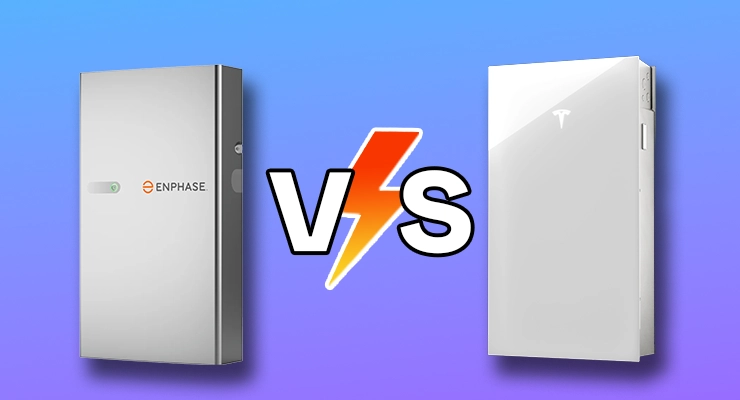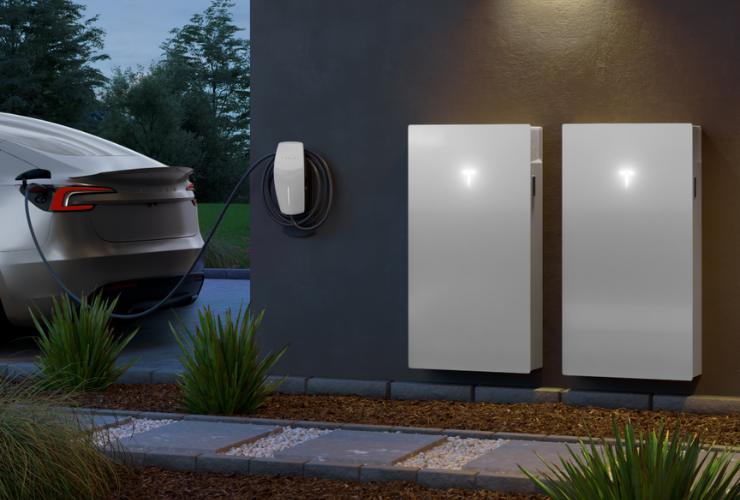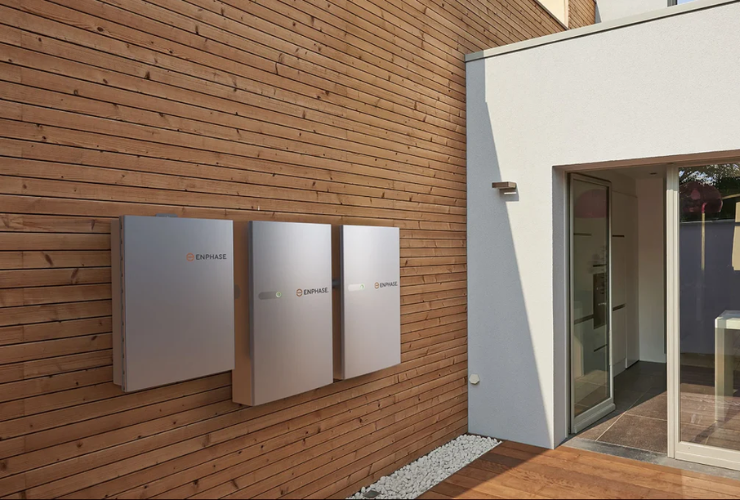Fast read
Choosing between an Enphase and Tesla battery involves comparing two distinct design philosophies. The Tesla Powerwall 3 is a high-capacity, all-in-one unit with a powerful integrated inverter, ideal for new, large-scale systems needing significant power output. The Enphase IQ Battery 5P is a modular, AC-coupled system prized for its reliability and scalability, making it perfect for retrofits or homeowners who want to start small and expand later. Both use safe Lithium Iron Phosphate (LFP) chemistry but differ in warranty, architecture, and how they integrate with your home's solar system.
At a glance: Enphase IQ 5P vs. Tesla Powerwall 3
Deciding on the right home battery is a significant step towards energy independence. Two of the most prominent names in the Australian market are Enphase and Tesla, each offering compelling but fundamentally different solutions. Understanding these differences is key to choosing the system that best aligns with your home’s energy needs, your existing solar setup, and your long-term goals.
This comparison focuses on the latest models available in Australia: the Enphase IQ Battery 5P and the Tesla Powerwall 3. We’ll explore their core technology, performance, warranty, and how their unique designs suit different types of homeowners.
Core technology: The fundamental difference
The most significant distinction lies in their system architecture.
The Enphase IQ Battery 5P is an AC-coupled battery system. This means it connects to your home’s wiring on the alternating current (AC) side and has its own built-in inverters. Specifically, each 5P unit contains six microinverters, which convert the battery’s direct current (DC) power to the AC power your home uses. This design makes it incredibly versatile, as it can be easily added to any existing solar system, regardless of the brand of solar inverter you already have.
The Tesla Powerwall 3 is a DC-coupled hybrid battery system. This means it has a powerful 11.5 kW solar inverter built directly into the unit. The battery is connected on the DC side, directly to the solar panels. This integrated design is highly efficient for new installations because the solar energy flows directly into the battery without being converted multiple times. However, retrofitting it to an existing solar system means you would be replacing your current solar inverter.
Performance and power
When it comes to raw power, the Tesla Powerwall 3 has a clear advantage in a single unit.
- Tesla Powerwall 3: With a continuous power output of 11.5 kW, it can run almost any household appliance, including high-demand items like air conditioners. Its high “Locked Rotor Amp” (LRA) rating of 185A means it’s exceptionally good at starting powerful appliances with motors.
- Enphase IQ Battery 5P: A single unit provides 3.84 kW of continuous power and peak power of 7.68 kW for 3 seconds. While lower than the Powerwall, this is often sufficient for essential loads during an outage. The key advantage is scalability; as you add more batteries, your power output increases. Two 5P units, for example, would provide a combined 7.68 kW of continuous power.
For a direct comparison of how efficiently the batteries store and release energy, we look at round-trip efficiency. The Powerwall 3 has a solar-to-battery-to-home/grid efficiency of 89%. The Enphase 5P has an AC round-trip efficiency of 90% and a DC round-trip efficiency of 96%. The Powerwall’s separate solar inverter efficiency (solar to home/grid) is higher at 97.5%, reflecting its streamlined design for new solar installs.
Capacity and scalability
Your choice may depend on whether you want to start big or have the flexibility to grow over time.
- Tesla Powerwall 3: Comes in one large capacity: 13.5 kWh of usable energy. This is often enough for an average family’s overnight energy needs. You can install up to four Powerwall 3 units together for a massive 54 kWh of storage.
- Enphase IQ Battery 5P: Is designed to be modular. Each unit adds 5.0 kWh of usable capacity. This is perfect for homeowners who want to start with a smaller upfront investment and add more storage later as their energy needs evolve, for instance, after purchasing an electric vehicle.
Reliability and warranty
A battery is a long-term investment, so reliability and warranty are crucial.
- Enphase IQ Battery 5P: A standout feature is its industry-leading 15-year limited warranty. Its decentralised design, with six independent microinverters, means there is no single point of failure. If one microinverter has an issue, the others continue to operate, enhancing overall system resilience.
- Tesla Powerwall 3: Comes with a 10-year warranty with unlimited cycles, provided it remains connected to the internet for software updates. While a strong warranty, it’s shorter than Enphase’s. Because it uses a single, central inverter, any issue with that component could take the entire system offline until repaired.
Both systems use Lithium Iron Phosphate (LFP) battery cells, which are widely regarded as the safest and most durable chemistry for home energy storage, offering excellent thermal stability.
Installation, cost, and other considerations
- Installation: As an AC-coupled system, the Enphase 5P is generally simpler and more flexible to install, especially when retrofitting. The Tesla Powerwall 3, being a DC-coupled system that replaces an existing solar inverter, can be more complex to retrofit but is streamlined for new, integrated solar-and-battery installs.
- Cost: While exact prices vary by installer and location, the cost structure differs. The cost-per-kWh of a Powerwall 3 is often lower due to its larger size. However, the modularity of the Enphase IQ Battery 5P provides a lower initial cost for a smaller 5 kWh system, with the option to expand later. It’s recommended to get quotes based on your specific needs.
- Software and Monitoring: Both companies offer sophisticated apps for monitoring your energy production and consumption. Tesla’s app is often praised for its sleek, user-friendly interface, especially for those who also own a Tesla vehicle. Enphase’s Enlighten app is highly detailed, allowing you to see the performance of individual solar panels if you have their microinverters.
- Virtual Power Plants (VPPs): Both Enphase and Tesla batteries are generally compatible with VPP programs in Australia, which allow you to earn credits by sharing your stored energy with the grid during peak demand.
Which battery is right for you?
Choose the Tesla Powerwall 3 if:
- You are installing a brand-new solar and battery system at the same time.
- You have high power needs and want to back up your entire home.
- You prioritise having the highest single-unit power and capacity.
- You are already in the Tesla ecosystem with an EV.
Choose the Enphase IQ Battery 5P if:
- You are retrofitting a battery to an existing solar system.
- You value system redundancy and the longest possible warranty.
- You prefer to start with a smaller capacity and have the flexibility to expand later.
- You have an Enphase microinverter solar system and want seamless integration.
Ultimately, the best choice is the one that fits your unique energy profile, budget, and future plans. Seeking independent guidance from accredited local installers is a crucial step to empower your decision.





